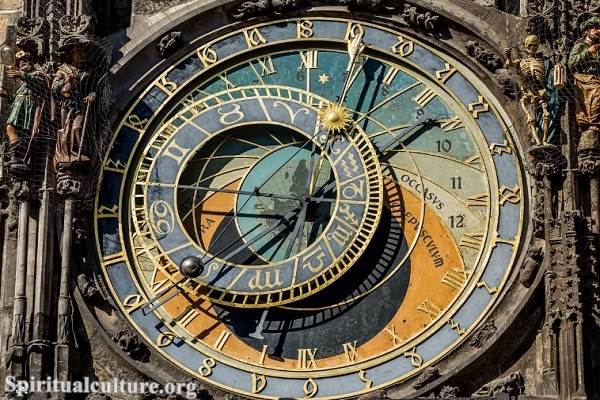The Twelve Tribes of Israel represent a foundational aspect of Jewish history and identity, intertwining their narratives with the broader context of the ancient Near East. Their origins, development, and societal roles present a captivating subject of study, demonstrating how these tribes influenced the religious, cultural, and political landscape of ancient Israel.
Historical Background of the Tribes
Ancestry of the Twelve Tribes
The Twelve Tribes of Israel trace their ancestry back to the patriarch Jacob, who was later named Israel. Jacob’s story is meticulously chronicled in the Book of Genesis, offering insights into the familial ties and the divine promises that shaped the tribes. Each tribe is descended from one of Jacob’s sons, born to him through his two wives, Leah and Rachel, as well as their maidservants Zilpah and Bilhah.
Jacob had twelve sons whose descendants formed the base for the tribes: Reuben, Simeon, Levi, Judah, Dan, Naphtali, Gad, Asher, Issachar, Zebulun, Joseph, and Benjamin. This fraternal lineage is not just about descent; it reflects the complexities of family dynamics, including favoritism and rivalry, particularly evident in Jacob’s relationships with his wives and their children.
The Role of Jacob in the Formation of the Tribes
Jacob (Israel) played a critical role in the formation of the tribes not only as their ancestor but also as the bearer of God’s covenantal promise. God’s blessing, which included the promise of land and progeny, was passed down through Jacob to his descendants. In Genesis 49, Jacob blesses his sons, prophesying their futures and establishing the identities of the tribes. This pivotal moment not only solidified their individual characteristics but also highlighted the divine intention behind their journeys.
The Influence of Matriarchs on Tribe Names
The matriarchs of the tribes—Leah, Rachel, Zilpah, and Bilhah—also had significant impacts on the tribal identities. The names of the tribes often reflect the circumstances of their births or the attributes of their mothers. For instance, the name “Judah” (from Leah) signifies praise to God, while “Joseph” (from Rachel) means “may he add,” indicating Rachel’s desire for additional children. Understanding the mothers’ roles offers a richer perspective on the tribes’ identities and their cultural significance.
The List of the Twelve Tribes
The Sons of Jacob as Tribe Leaders
The Twelve Tribes are identifiable by the sons of Jacob, who each became a leader of their own tribal group:
- Reuben – The firstborn, associated with leadership and instability.
- Simeon – Known for his ferocity and violence.
- Levi – Set apart for priestly duties, inheriting no land.
- Judah – Gained prominence; the lineage of King David and Jesus.
- Dan – Recognized for its wisdom and role as a judge.
- Naphtali – Associated with agility and swiftness.
- Gad – Symbolized strength and military prowess.
- Asher – Linked to prosperity and abundant harvest.
- Issachar – Known for wisdom and understanding.
- Zebulun – Associated with maritime trade and commerce.
- Joseph – Notably has two tribes, Ephraim and Manasseh, named after his sons.
- Benjamin – The youngest, known for his agility and loyalty.
Unique Characteristics of Each Tribe
Each tribe possessed distinct attributes and roles within the Israelite community. The tribe of Judah emerged as a significant political force, producing kings and leading the Israelites into battles. In contrast, the tribe of Levi assumed religious responsibilities, acting as priests and caretakers of the Tabernacle, while others, like Dan and Naphtali, contributed to the military might of Israel. These diverse roles created a complex society that was ultimately unified under a shared heritage.
The Role of Joseph and the Tribes of Ephraim and Manasseh
Joseph holds a special place among the tribes, as his two sons, Ephraim and Manasseh, each became a tribe in their own right. This division reflects Joseph’s significant role in Egyptian society, where he saved his family during a time of famine. The prominence of Ephraim, in particular, led to it being seen as a representative tribe of the Northern Kingdom, thus enhancing the complexity of tribal relationships and historical developments.
Geographic Distribution of the Tribes
Allotment of Land Under Joshua
After the Exodus from Egypt and 40 years of wandering in the desert, the Israelites entered the Promised Land under Joshua’s leadership. The allotment of land was a pivotal moment, as each tribe was given specific territories that defined their geographic boundaries and resources. The land distribution is detailed in the Book of Joshua, illustrating the divine promise of land fulfilled.
Maps of the Territories of the Twelve Tribes
Maps from biblical history depict the geographic allocations of the tribes. The territory of Judah lay in the south, encompassing Jerusalem, while Joseph’s tribes, Ephraim and Manasseh, were located in the central and northern regions. Other tribes, such as Zebulun and Issachar, occupied areas in the north near the Sea of Galilee. The delineations of these territories played crucial roles in the historical interactions among tribes and the development of political entities.
The Tribe of Levi and Its Unique Status
The Tribe of Levi is unique, as it did not receive a specific territorial allotment like the other tribes. Instead, Levites were dispersed throughout the land, serving in religious capacities and maintaining the worship of Yahweh. They were given cities and pasture lands, reinforcing their role as mediators between God and the people. This distinction reflects the importance of religious leadership in ancient Israelite society.
Religious Significance of the Tribes
Covenant with God and Tribal Unity
The Twelve Tribes were deeply embedded in God’s covenant with Israel, symbolizing unity among the people. Each tribe’s existence was a testament to God’s promises, and together they formed a singular national and spiritual identity. The importance of obedience to God’s laws and maintaining the covenant was emphasized throughout Israelite history, particularly in the context of their relationships with neighboring nations.
The Role of the Ark of the Covenant and the Tent of Meeting
Central to Israelite worship was the Ark of the Covenant, which housed the tablets of the Law and represented God’s presence. The Tent of Meeting served as the place of worship and sacrifice, where the tribes gathered to seek divine guidance. The tribal leadership played essential roles in religious rituals, ensuring adherence to covenantal obligations and overseeing communal worship.
Pilgrimage Sites and Sacred Practices
Various locations became pilgrimage sites for the Israelites, reflecting the tribes’ spiritual significance. Jerusalem, particularly the Temple, became the central place for worship, while other sites like Shiloh, where the Tabernacle was located before Jerusalem, held importance for various tribes. Sacred practices, including annual feasts and sacrifices, were vital in fostering a sense of community and shared identity among the tribes.
Political Structure and Leadership
Tribal Confederation and Governance
The governance of the tribes operated as a loose confederation, where each tribe maintained autonomy while participating in collective decision-making during times of crisis. Elders and leaders emerged from each tribe, contributing to a council that addressed communal needs. This structure allowed for flexibility in governance, accommodating the unique circumstances of each tribe.
The Judges and Their Role in Tribal Leadership
During periods of unrest, Israel was led by judges—individuals raised by God to deliver the tribes from oppression. These judges functioned as both military leaders and spiritual guides, exemplifying the attributes of tribal unity. Notable judges such as Deborah, Gideon, and Samson emerged during this time, addressing the unique challenges faced by their communities and reinforcing the importance of divine guidance.
The Transition to Monarchy and Its Impact on Tribes
The transition from a tribal confederation to monarchy marked a significant turning point in Israel’s history. The demand for a king, outlined in 1 Samuel, highlighted the tribes’ desire for centralized leadership in response to external threats. The establishment of Saul as the first king and subsequently David and Solomon had profound implications on the tribes, triggering both unity and division.
Historical Developments and Dynamics
Conflicts and Cooperation Among the Tribes
Throughout their history, the tribes experienced numerous conflicts and instances of cooperation. Rivalries often stemmed from territorial disputes and differing political agendas; for instance, the tensions between the tribes of Israel in the north and Judah in the south. However, there were also significant periods of cooperation, particularly during collective efforts to repel invading forces or maintain national identity in the face of oppression.
The Division of the Kingdom: Israel and Judah
Following King Solomon’s reign, the United Kingdom of Israel split into two separate kingdoms: the Northern Kingdom of Israel and the Southern Kingdom of Judah. This division fundamentally altered the relationships among the tribes, with certain tribes aligning themselves with either kingdom. Such divisions led to varying fates; while Judah ultimately continued as a prominent entity, Israel faced conquest and exile.
The Search for the Lost Tribes of Israel
The fate of the lost tribes remains a topic of fascination and speculation. The Assyrian conquest of the Northern Kingdom in 722 BCE led to the dispersion of many tribes, particularly those in the north. This loss sparked various theories and explorations into their whereabouts, fueling historical and religious discussions in contemporary times. The search for these tribes continues to capture imaginations, revealing the enduring legacy of the tribal confederation.
Modern Relevance and Legacy
Cultural Significance of the Twelve Tribes Today
The legacy of the Twelve Tribes of Israel extends into modern culture, influencing religious thought, artistic expression, and identity politics. Concepts of tribal identity and heritage resonate through Jewish communities worldwide. The tribes are often referenced in discussions on cultural preservation, historical studies, and interfaith dialogue.
Interpretations in Religious Texts and Traditions
In Jewish and Christian traditions, the Twelve Tribes symbolize divine promises and serve as a framework for understanding biblical narratives. The genealogies and histories of the tribes are crucial for understanding the unfolding of God’s plan, providing theological depth to religious teachings. Interpretations of the tribes appear in various texts, highlighting their significance throughout centuries of scriptural analysis.
The Twelve Tribes in Contemporary Scholarship and Popular Culture
Today, the Twelve Tribes are subjects of diverse scholarly exploration and popular culture manifestations. From theological debates to cultural references in literature and film, the tribes encapsulate rich narratives of identity, conflict, and survival. Contemporary scholars examine their impact on modern religious thought, cultural practices, and historical discourses, ensuring that the story of the Twelve Tribes remains a vital part of social consciousness.
Conclusion
The Twelve Tribes of Israel, with their rich historical and cultural significance, offer profound insights into the nature of identity, community, and divine promise. Their stories reflect the enduring struggles, triumphs, and transformations of the Israelite people, underscoring their integral role in shaping Jewish history and heritage. Understanding the dynamics of the tribes enhances appreciation for their current relevance and invites ongoing exploration of their legacy.
The narrative of the Twelve Tribes continues to inspire reflection on collective identity and the role of faith in human history, serving as a timeless reminder of the complexities of culture and spirituality. As one explores the rich tapestry of the Twelve Tribes of Israel, the lessons from their journey resonate far beyond their ancient origins, echoing through contemporary discussions of community, faith, and resilience.


